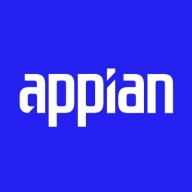

Appian and Flowable are competing in the business process management solutions category. Appian appears to have the upper hand with its advanced automation capabilities and rapid deployment, while Flowable offers enhanced flexibility and open-source advantages.
Features: Appian provides a strong low-code development platform, AI-driven insights, and robust automation tools. It offers rapid application building and diverse integration options. Flowable stands out with its open-source architecture, allowing extensive customization and scalability. It delivers enhanced flexibility for adaptable business processes and supports extensive system integrations.
Ease of Deployment and Customer Service: Appian adopts a cloud-first strategy that enables quick implementation with comprehensive and responsive customer support. Flowable offers flexible deployment options, including on-premises solutions beneficial for organizations with specific security needs. It provides community-driven support with professional services available for varying requirements.
Pricing and ROI: Appian generally incurs higher initial costs but shows strong ROI through accelerated market entry and efficient resource use. Flowable has more appealing pricing models with lower initial investments, attracting smaller businesses or constrained budget projects. Despite higher expenses, Appian's extensive features justify long-term investment, while Flowable provides cost-efficient solutions with satisfactory ROI.
| Product | Market Share (%) |
|---|---|
| Appian | 5.8% |
| Flowable | 6.4% |
| Other | 87.8% |


| Company Size | Count |
|---|---|
| Small Business | 20 |
| Midsize Enterprise | 9 |
| Large Enterprise | 41 |
Appian is a unified low-code platform and solution used by businesses to build enterprise applications and workflows. This product adapts to the needs of clients and the technologies they are already using to combine their data in a single workflow and maximize resources. The platform has four main components through which it transforms the work process for companies of various sizes. They are:
Appian is utilized across a diverse set of industries, including automotive and manufacturing, energy and utilities, education, financial services, telecom and media, transportation, retail, insurance, healthcare, and life sciences. The most frequent use cases of Appian are customer journey, governance, risk and compliance, operational efficiency, supply chain, distributed order management, and environmental, social, and governance (ESG) management.
Appian Features
Appian has various features that allow users to create solutions for their businesses. These features can be separated into a few groups according to function, including automation, low-code application development, and integrations and data. Some of the most frequently used features of Appian include:
Appian Benefits
The benefits of using Appian include:
Reviews from Real Users
A practice leader - digital process automation at a computer software company values Appian highly because the product is easy to develop, low-code, and has a good user interface.
Alan G., an advisory board member at Codecon VR, Appian offers a clear application life cycle, easy to learn documentation, and comes with a fundamentals course.
Flowable is a versatile software that streamlines and automates business processes. It is commonly used for workflow management, task automation, and digital transformation initiatives.
Users also utilize Flowable for document management, case management, and customer journey mapping. Its valuable features include efficient workflow management, seamless integration capabilities, and a user-friendly interface.
Flowable allows for smooth collaboration and task automation, and its ability to integrate with other systems and applications enables a seamless flow of information.
The intuitive and easy-to-use interface makes it accessible to users of all technical backgrounds.
We monitor all Process Automation reviews to prevent fraudulent reviews and keep review quality high. We do not post reviews by company employees or direct competitors. We validate each review for authenticity via cross-reference with LinkedIn, and personal follow-up with the reviewer when necessary.